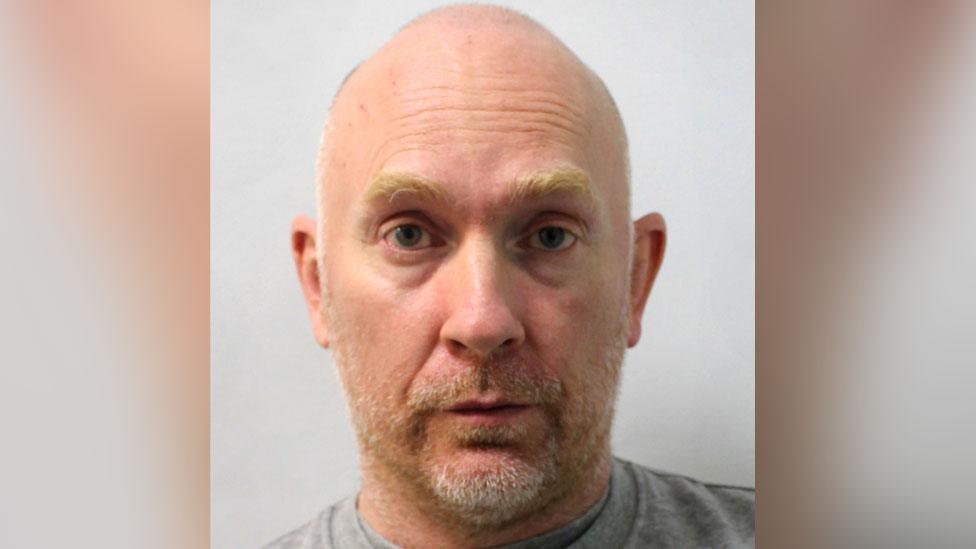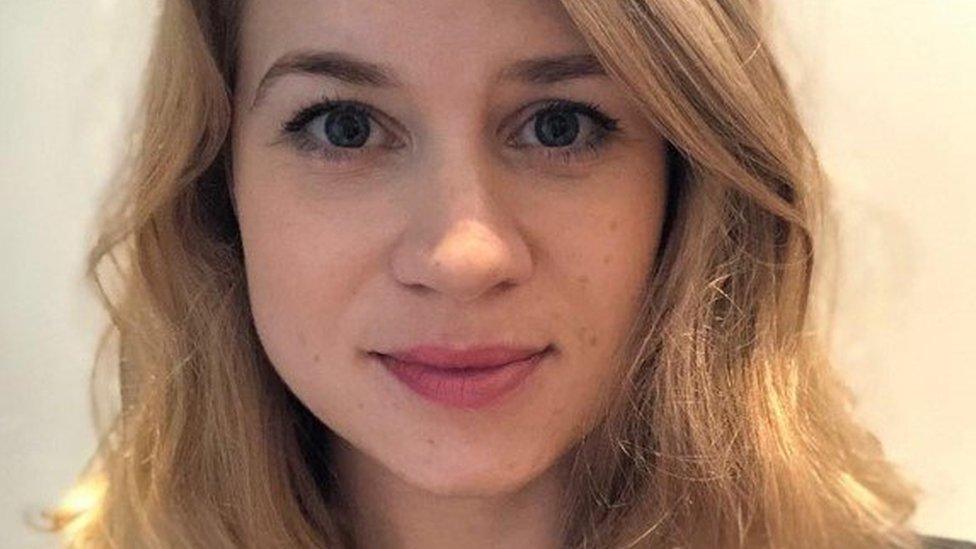Wayne Couzens: Sarah Everard killer linked to 2015 indecent exposure incident
- Published

Wayne Couzens will be sentenced for the murder of Sarah Everard in September
PC Wayne Couzens was accused of indecent exposure six years before he murdered Sarah Everard, it has emerged.
Kent Police is now being investigated by the Independent Office for Police Conduct (IOPC) over whether it handled the allegations in 2015 properly.
The IOPC is also examining allegations the Met Police did not investigate adequately another claim that Couzens had exposed himself.
That alleged incident happened in south London only days before the killing.
Firearms officer Couzens has pleaded guilty to the 33-year-old marketing executive's murder. He will be sentenced in September.
Two officers are under investigation for possible breaches of professional standards in relation to the alleged flashing offence in London, said to have happened in a fast-food restaurant.
In total, the IOPC said 12 gross misconduct or misconduct notices had so far been served on police officers from several forces relating to the Couzens case.
One IOPC investigation is examining allegations that a probationary Met constable, who was at a cordon around a scene of investigation in the case, shared an "inappropriate graphic" with colleagues via social media. Three officers have been served with gross misconduct notices in relation to that allegation.

Sarah Everard was abducted in south London by Couzens, who drove her to Kent where he raped and strangled her
The IOPC is also looking into allegations that officers from several different police forces breached standards of professional behaviour by sharing via a messaging app information that was linked to the prosecution of Couzens.
One officer has been served with a gross misconduct notice and another six have received misconduct notices.
Additionally, the IOPC is examining the circumstances around Couzens sustaining head injuries in custody, on 10 and 12 March, while he was being held on suspicion of Ms Everard's murder.
It said all officers in that inquiry were being treated as witnesses.
Commissioner Cressida Dick: "All of us in the Met are sickened, angered and devastated"
Couzens joined the Civil Nuclear Constabulary, external (CNC) in March 2011, leaving to work for the Met in September 2018.
He was initially based in Bromley in south-east London then moved to the Parliamentary and Diplomatic Protection Command, where his primary role was uniformed patrols, mainly at a range of embassies in the central London.
The CNC said Couzens served for eight months at Sellafield in Cumbria before transferring to Dungeness, Kent, where he was based for the rest of his service.
Before joining the CNC, he was with Kent Police.
The CNC said Couzens underwent an "enhanced level of vetting" and had no records of complaints or misconduct made against him.
- Published9 July 2021
